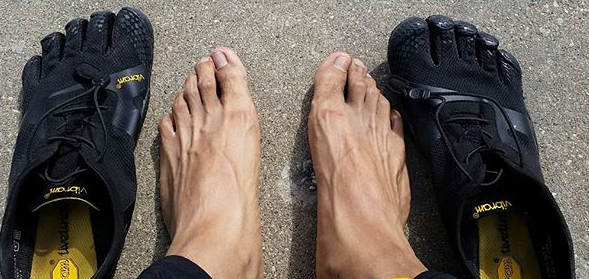Is it healthy to walk barefoot? The answer is absolutely yes. New research strongly implies that you really should be doing more walks barefoot. The reason is that our sensory perception of the world weakens as we age, especially the sensory nerves in the feet because we wear shoes with too much cushioning, causing us to be completely disconnected with the earth . To understand this argument, you need to remember, humans evolved as a barefooted species which enhanced our survival by allowing us to run without injury to catch our food. This is why wearing cushioned footwear causes annoying problems like weak toes and arches, decreased ankle stability and bad posture.
Do More Walks Barefoot
The pressure, pain and movement-sensitive nerves in the feet enhances the information on balance in the area of the brain that controls balance, helping us acquire more precise spatial awareness when walking and running. This can only be optimized via barefooting because the nerves in the feet are most hyper-aware and responsive, giving you a more accurate perception of the ground.
Aging naturally affects brain cell populations, and as we age, movement perception and movement adaptations unfortunately fades, too. But, walking barefoot keeps the nerve cell communications between the brain and the feet strong, thereby stalling nerve cell degradation in the feet and the motor areas in the brain. And, I would not be surprised if the volume of the motor cortex area of the brain is greater in habitual ‘barefooters’ vs habitual ‘shoders’, suggesting that barefooters may have better neurobiological function in their cerebellum and the motor cortex –this is how barefooters would have better movement and balance control and sharper reflexes in the feet and leg.
Because increased nerve activity in the feet when you are barefoot correlates to better ankle and knee stability as well as better posture, implies why so many shoe-wearing (shod) individuals struggle with daily activities as they age — like walking safely on even and uneven terrain. This is because long-term use of cushioned running shoes changes the neural circuits in the feet and brain, lowering your tactile abilities.
Therefore, it makes for a good argument that by not going barefoot, accelerates age-related movement failures in the lower leg and may explain why so many older people have trouble balancing. Wearing cushioned running shoes all the time not only changes how the nerves in the feet respond to pressure and motion with age, but it reflects ongoing changes in the brain and the sensory-motor system in response to such footwear, creating false motion illusions which have injurious implications.
………..Another reason how barefooting helps best is through ‘earthing‘.
More to Explore at Run Forefoot:
How to Avoid Toe Injury When Running
Why Avoid Wearing Cushioned Running Shoes on Pavement
Nutritious Pre and Post-Run Smoothies
Reviews on the Best Barefoot Running Books
References:
Macknik SL and Martinez-Conde S. The Age of Illusion. Scientific American MIND, Jan/Feb,2016; 18-19.
Bretta Riches
BSc Neurobiology; MSc Biomechanics candidate, ultra minimalist runner & founder of RunForefoot. I was a heel striker, always injured. I was inspired by the great Tirunesh Dibaba to try forefoot running. Now, I'm injury free. This is why I launched Run Forefoot, to advocate the health & performance benefits of forefoot running and to raise awareness on the dangers of heel striking, because the world needs to know.
Latest posts by Bretta Riches (see all)
- What Running Style is Best for Your Knees? Forefoot Running NOT Heel Strike Running - 02/05/2024
- Heel Strike Running Causes Bone Pain - 29/04/2024
- Heel Strike Running Causes Slipped Discs - 25/04/2024

